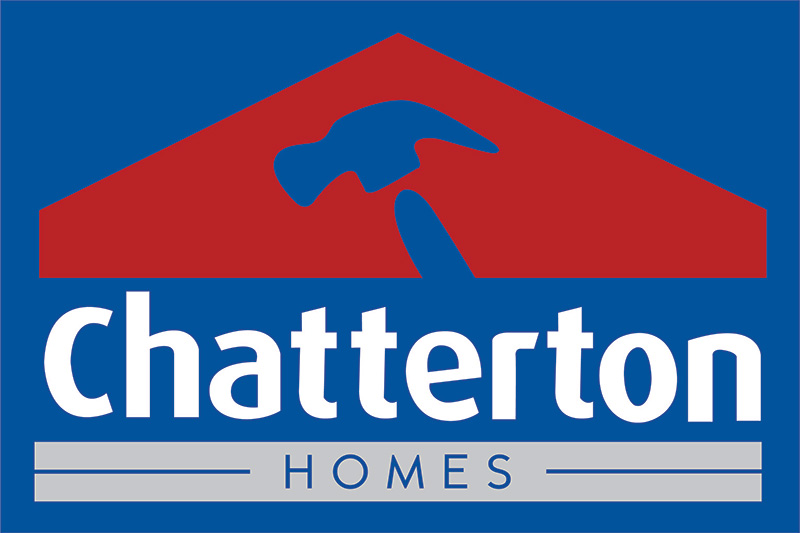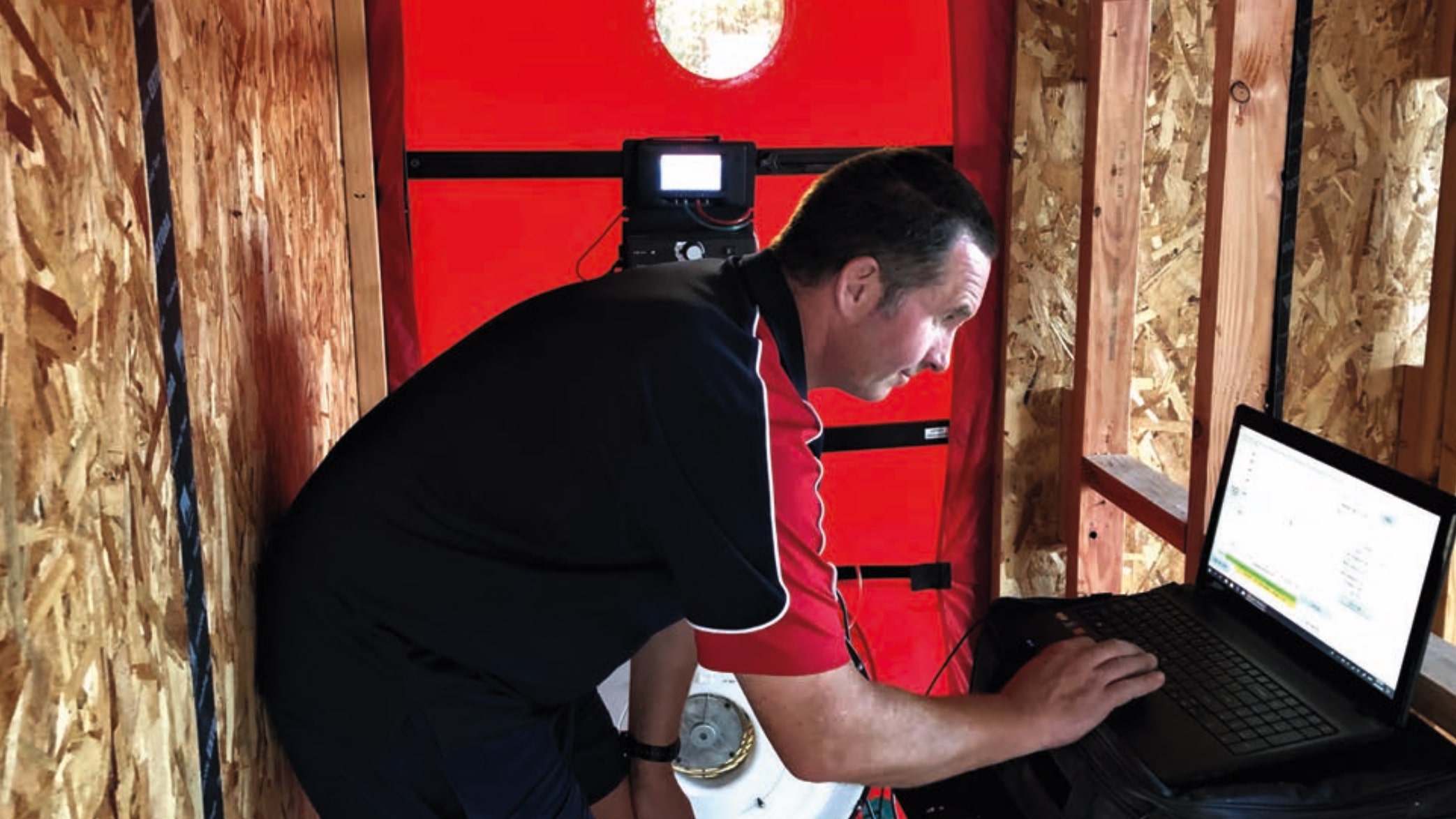The Importance of Air Tightness in a Home
What is airtightness?
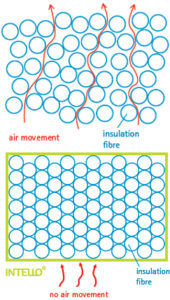
It is basically prevention of uncontrolled air movement throughout the building envelope. A draughty house leaks energy and is uncomfortable to live in, we call this infiltration.
Why is it important?
Uncontrolled air movement contributes to heat loss in winter, heat gain in summer, presence of allergens and compromises the performance of insulation.
An airtight building minimises heat loss and therefore it is easy to maintain an even indoor temperature with the minimum amount of active heating. This means that savings of up to 90% on heating can be made whilst enjoying a healthy even temperature throughout the whole building (assisted by an MHRV). A combination of an airtight building with a continuous layer of insulation ensures that energy is kept within your home, rather than being wasted by escaping into the atmosphere.
How is Airtightness tested?
Measurement of air tightness is carried out using a ‘Blower Door Test’. It is basically a powerful fan which mounts into the frame of an exterior door. The fan has sensors that are able to accurately measure the amount of air it takes to maintain a constant pressure of 50 pascals (a fresh breeze). The test includes pressurising the building and also depressurising the building and the final result is an average of both readings. If significant air leakages are present they can be detected by several methods.

The testing of a new building is normally carried out twice, once after an airtight seal has been installed (i.e Intello wrap) and once at build completion. It is important to do the first test after the fabric of the building is complete and the windows are fitted as it is still possible to find any breaches and fix them.
In a Certified Passive house air tightness must be less than 0.6 air changes an hour. Minimum code-built homes average 4 to 10 ac/hr.
How is the performance of insulation (or the R-Value) affected by air tightness?
The R-value of a material is the materials resistance to conductive heat flow (a measure of its thermal resistance). The higher the R-value, the greater the insulating effectiveness.
The performance of insulation is reliant on no air movement through it, as it is trapped air that is the secret to its performance. In fact, a recent study* found that the R-Value of insulation decreases by a factor of 4.8 if there is a 1mm gap in air tightness (of the computer simulated area measured*), suggesting a significant decrease in performance.
How is moisture movement affected by air tightness?
Apart from leaking heat energy, a home that is not airtight can also suffer from moisture migration into the fabric of the building (Water Diffusion).
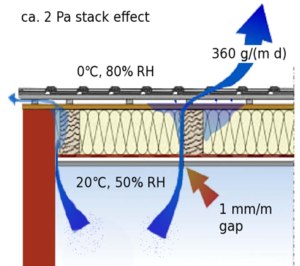
Diagram illustrating Moisture Migration Through the Building
Envelope where a 1mm gap in airtightness exists.
Water diffusion in this case is the movement of warm air into, and through, the exterior construction of the building.
An NZ study* has shown that water diffusion increases by a factor of 1,600 when gaps in the fabric of the building exist. If moisture builds up within a wall cavity the integrity of the insulation will be compromised.
Additionally, as warm air flows through insulation to the exterior of the building at the point it finds a cold surface, condensation occurs. This typically occurs at 11-12 degrees C and is called the dew point. When this occurs it often leads to the formation of mould. This can occur readily within the construction where the dew point is found. Unfortunately, this can go undetected as it is not visible.
A Note on Ventilation
An airtight envelope can easily be ventilated with the opening of windows but this has found to be a very unreliable way to ensure the control of fresh air and humidity. In an energy efficient house, it is normal to fit a mechanical heat recovery ventilation system (MHRV). This system replaces the stale air inside with fresh air from outside through a balanced unit that is also able to capture the heat in winter with an efficient heat exchanger. Incredibly the units are ultra-efficient and consume the equivalent power as one light bulb.
Windows can still be opened but when the windows are closed all air movement is controlled through the MHRV, managing not only indoor air temperature but humidity and allergen levels (through its filter systems).
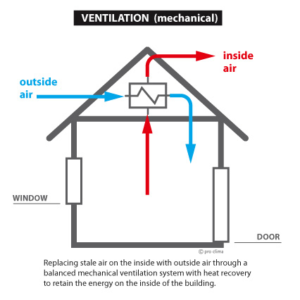
Noise Control!
One of the big pluses that the combination of quality windows and air tightness delivers is a quiet house. This becomes more important in cities with neighbours.
If you are forced into opening windows for ventilation and you have a noisy road or neighbours, or even bugs at night this can be frustrating!
In the meantime, if you would like to find out more about a variety of ways to produce a healthier, more comfortable and more energy efficient home, including full passive certification, please feel free to grab our informative free guide here!
Don’t forget to contact us afterwards if you would like some more information! 03 3130103 or info@chattertonhomes.co.nz
*Study Reference: A New Zealand Based Study on Airtightness and Moisture Management, Proclima, 2011.
